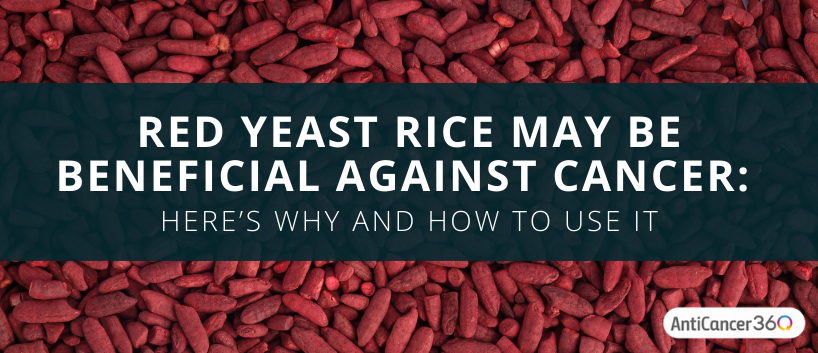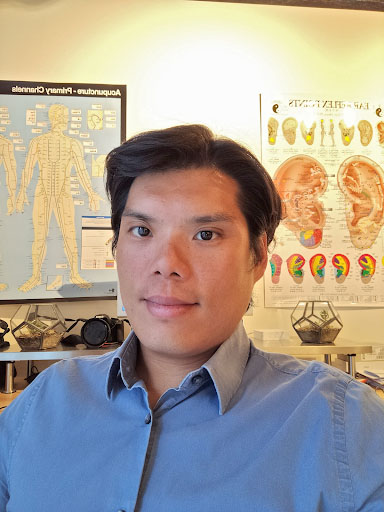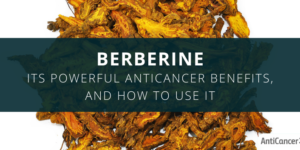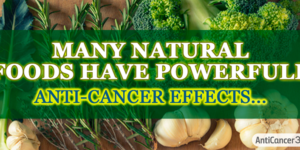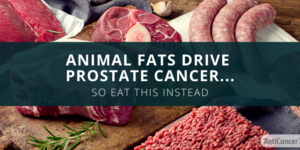When you’re facing difficult and later-stage cancers, it is essential to strengthen your body in every way you can. Supporting your body with essential nutrients can also help you “fight cancer in every direction.”
There are thousands of products on the market that claim to help fight cancer… but trying to decide if you should take them – and which ones to take – can be overwhelming.
We are here to help show you the natural substances that have research supporting their potential anticancer benefits and how to take them safely.
Certain natural supplements can help strengthen and support your body to fight cancer more effectively, in addition to your oncologist treatments. Depending on your situation, red yeast rice may be one of these options.
Red yeast rice is well-known as a “naturally occurring statin.” Statin drugs are the most common medicines prescribed for high cholesterol… but recent research is also showing their anticancer potential.
What is Red Yeast Rice?
When rice is fermented with the yeast Monascus purpureus, the end product is red yeast rice. The fermentation of red yeast rice naturally produces its red pigments. Red yeast rice contains biologically active compounds called monacolins, the most notable of which is monacolin K [1].
Red yeast rice is a natural statin because it contains monacolin K. Monacolin K is identical to lovastatin, a prescription drug that lowers cholesterol. Lovastatin’s brand name, Mevacor®, refers to its naturally sourced counterpart [2].
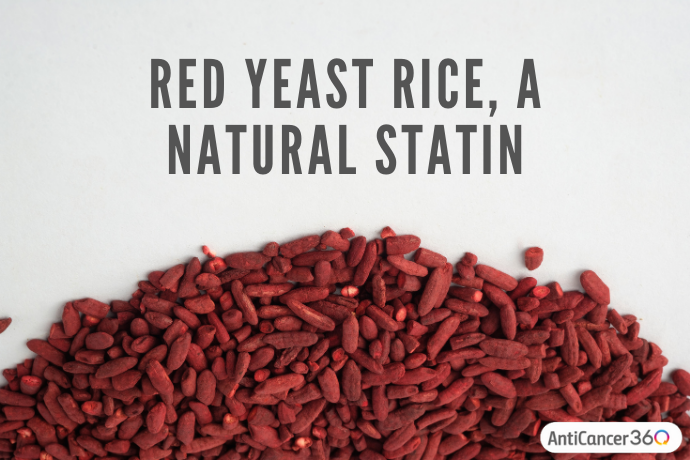
In ancient Chinese medicine, red yeast rice was thought to support healthy blood circulation. Since the 1970s, red yeast rice has been a popular dietary supplement for the primary purpose of lowering cholesterol. However, emerging scientific evidence suggests a promising new role of red yeast rice due to its antioxidant and potential anticancer effects [3].
Statins, among other drugs, are sometimes prescribed “off-label” for their anticancer effects. Off-label prescribing is when healthcare providers use medications to treat conditions other than their original FDA-approved uses (indications).
With the knowledge that red yeast rice is structurally identical to a statin, the next logical exploration is whether red yeast rice can play a role in preventing or fighting cancer… which is what we will look at next in today’s post.
Cancer Metabolism Suppression:
How to Starve Cancer with
Red Yeast Rice
Cancer metabolism is the process by which cancer feeds itself with nutrients. At the molecular level, cells turn nutrients into energy to fuel their survival and growth. When you are fighting cancer, you want to come at it from every direction… This includes a crucial strategy that uses certain drugs and natural supplements to starve the cancer…. and do it in a way that doesn’t harm your healthy cells.
Our goal is to prevent sugar, fats, and proteins from nourishing cancer cells. This strategy weakens cancer cells to make them more vulnerable to oncology treatments. Fortunately, red yeast rice is one of many natural substances that show potential in blocking cancer metabolism.
Red Yeast Rice Interferes with Cancer Metabolism of Fats
Fats are essential energy metabolism sources in the human body. Fats include lipids, fatty acids, and cholesterol. Fat metabolism affects many cell processes, including cell growth, proliferation, and survival. Consequently, the reprogramming of fatty acid metabolism plays a significant role in cancer progression.
Cancer cells are dependent on cholesterol, which is needed to build tumor cell membranes. Cholesterol is also required to produce hormones, like estrogen and testosterone, which are vital for cell signaling. A popular goal of anticancer research is finding ways to block cancer cholesterol synthesis… and research shows that statins and red yeast rice could help.
Cholesterol is essential to our bodies but excessive amounts can lead to many health problems. Low-density lipoprotein (LDL) cholesterol is known as “bad” cholesterol. Excess LDL can build up in blood vessel walls, which decreases the blood flow of oxygen to vital organs. This increases the risk of heart attacks, strokes, and possibly, cancer [4].
The link between cholesterol and cancer development is a controversial area among researchers. Some population studies show an association between cancer and cholesterol levels [5]. One population analysis found that each 10 mg/dl increase in total cholesterol above 200 mg/dl* was associated with a 9% increase in prostate cancer recurrence.
*(LDL levels are part of the total cholesterol blood test. Depending on your heart health, normal LDL level is usually considered to be less than 100 mg/dL to 129 mg/dL. Talk with your healthcare professional about your LDL goal.) [6]
Many clinical studies have confirmed that taking red yeast rice supports healthy LDL cholesterol levels. Red yeast rice and statins (e.g. Lipitor, Crestor) both work by blocking the HMG-CoA reductase enzyme. HMG-CoA reductase is an enzyme in the mevalonate pathway that leads to cholesterol production. Blocking this enzyme leads to lower cholesterol levels in the bloodstream [7]. And as you’ll see later on, this effect can also help against cancer [8].
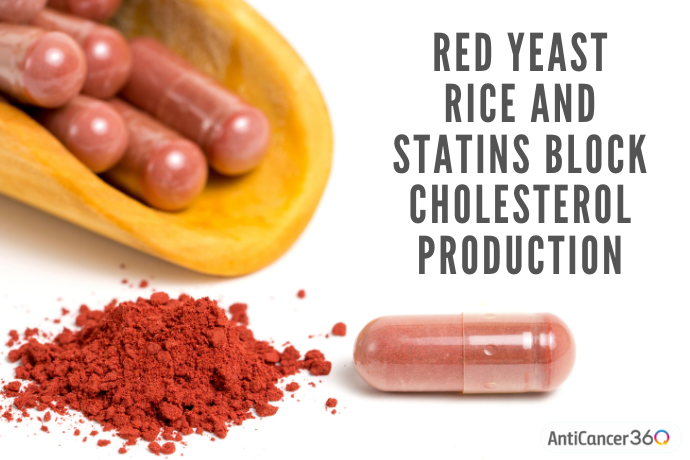
Studies show that statins are associated with lower death rates from any cause, including cancer, compared to placebo. (A placebo is a treatment that contains no active medication) [9].
Statins lower the risk of death, heart attack, and stroke by their effects on reducing LDL. Statins can lower LDL by 30 to 55% [10].
Statin drugs are considered generally safe, but many people cannot tolerate them due to their muscle-related side effects. Statin drugs can cause muscle pain, spasms, or weakness in 7% to 29% of people who take them. So, for many people, the metabolism support and potential anticancer benefits of statins can’t be realized because the side effects can be so unbearable [11],[12].
So let’s look at what the research says about red yeast rice, from a clinical perspective.
In a major clinical study, red yeast rice was compared to placebo in nearly 5,000 adults for 4.5 years. This study found that red yeast rice was associated with a significantly reduced chance of death from heart disease, heart attack, and stroke. Potential anticancer benefits of red yeast rice were also found, including a significant reduction in cancer deaths, and a 51% reduction in cancer occurrence [13].
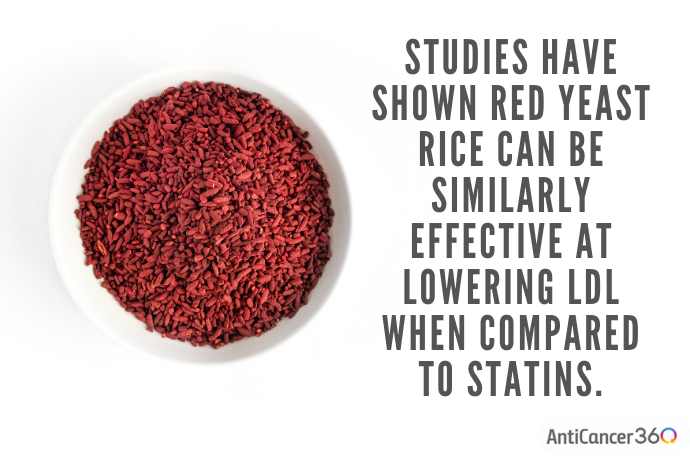
Some clinical studies have directly compared red yeast rice to statins and have found that they were similarly effective at lowering LDL, on average. Some studies have mixed results, and their small size and short durations might limit the broad application of the results [14].
In one such study of 43 adults with high cholesterol, participants were randomly selected to receive either red yeast rice 2400 mg twice daily or pravastatin 40 mg daily. After 12 weeks, the pravastatin group had an average 27% LDL reduction and the red yeast rice group had an average LDL reduction of 30%.
When comparing side effects, 9% of the pravastatin group had muscle side effects that were severe enough to make people stop the trial. In comparison, 5% of the red yeast rice group experienced these severe muscle side effects [15].
An interesting clinical trial compared red yeast rice (3600 mg per day) to placebo in people who previously stopped statins due to muscle-related side effects (“statin-intolerant.”) At the end of the 24-week trial, a significant 21.3% average LDL reduction was demonstrated over placebo. Notably, 93% of the statin-intolerant people could tolerate red yeast rice without muscle-related side effects [16].
Overall, red yeast rice is not toxic to healthy cells. Red yeast rice can block tumor cells through several mechanisms and research shows its effectiveness for supporting healthy cholesterol levels, making it an excellent potential anticancer tool.
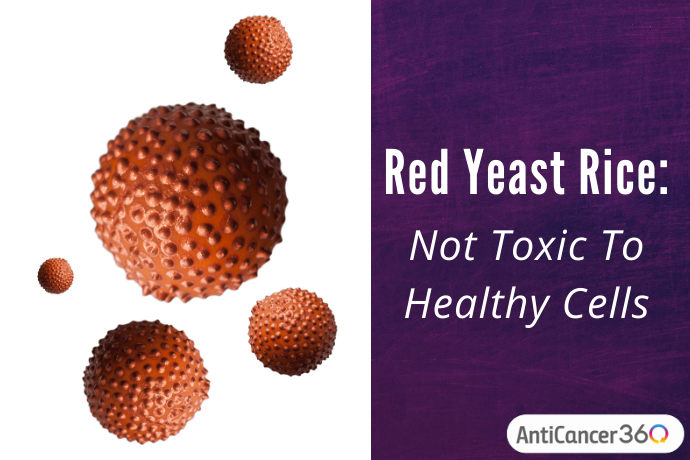
Now, a really interesting 2008 study showed that red yeast rice’s anticancer effects are not exclusively attributed to its monacolins alone… which means red yeast rice might contain additional anticancer substances beyond its statin-like monacolin compounds [17].
In this study, scientists treated three groups of colon cancer cells with lovastatin, red yeast rice, and red yeast rice with its monacolins removed (leaving the pigment fraction only: “PF-RYR”). Then the results were compared and analyzed [18].
Surprisingly, the effect of PF-RYR was similar to that of the whole red yeast rice extract. The lovastatin, PF-RYR, and the whole red yeast rice had a similar impact on colon cancer cell death and reduced levels of the enzyme HMG-CoA reductase [19].
Additionally, the PF-RYR had similar effects on the levels of sterol response element-binding protein-2 (SREBP2). SREBPs function to construct essential enzymes that regulate the uptake and building of fats, lipids, and cholesterol. These results suggest that the combined effects of whole red yeast rice – – beyond its statin-like monacolins – – may be active in slowing colon cancer growth [20].
Scientists also showed that red yeast rice caused cell death in gastric cancer cells by scavenging reactive oxygen species (ROS). Compared to its effects on normal cells, red yeast rice appeared to have cancer-specific cell-killing action [21].
Besides its role in supporting healthy cholesterol levels and its antioxidant effects, red yeast rice may also enhance the benefits of some conventional oncology treatments.
Aggressive Integrative Approach with Red Yeast Rice
As we discussed, a great deal of evidence supports that red yeast rice may help reduce atherosclerosis (the narrowing of blood vessels due to cholesterol build-up). Red yeast rice has also been shown to have free radical scavenging abilities, protecting blood vessel linings (endothelium) through antioxidative and anti-inflammatory mechanisms [22].
Previous studies have demonstrated that some herbal supplements can act as radiosensitizers. A radiosensitizer is something that makes difficult cancers more vulnerable to radiation treatment. Radiosensitizers can enhance the effects of radiation while sometimes protecting healthy cells.
Specific forms of prostate cancer can unfortunately become resistant to radiation therapy. In a 2012 study, scientists demonstrated that red yeast rice sensitizes human prostate cancer cells to radiation. The radiosensitizing effects were also shown in prostate cancer cells grafted in mice [23].
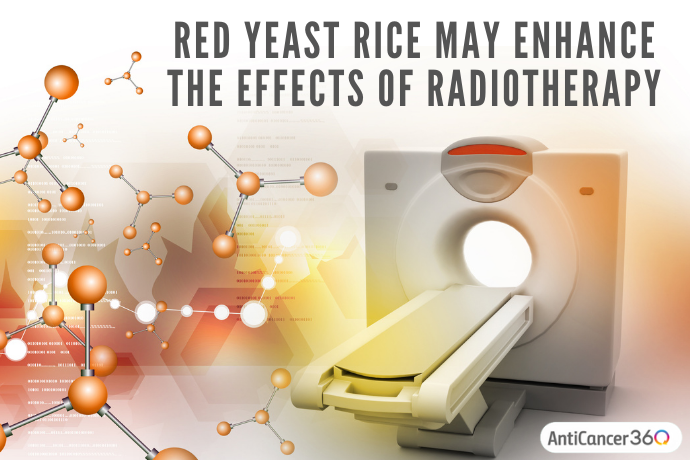
In this study, the combined treatment of red yeast rice with radiation led to autophagy in prostate cancer cells. The literal meaning of autophagy is “self-eating” and is the body’s way of eliminating damaged cells to reconstruct new cells [24].
Many laboratory studies have shown the potential anticancer capability of red yeast rice in colon, breast, lung, prostate, and other cancers. Next let’s look at how to take red yeast rice and what you should know before you take it.
How To Use Red Yeast Rice: Dosages, Side Effects, and Precautions
Dosage
The most common dosage of red yeast rice extract in cancer-related studies is 600 mg by mouth twice daily [25].
Red yeast rice products are usually standardized to monacolin K content. However, red yeast rice is not regulated by the FDA. There is considerable variability in the monacolin K content of red yeast rice supplements on the market.
Red yeast rice is produced by fermenting rice. Citrinin, a toxin, is a natural by-product of the rice fermentation process. There are no FDA standards or guidelines for citrinin content limits in red yeast rice supplements. However, the generally recognized industry standard is one part per million. It is advised to look for high-quality supplement manufacturers that test their products to ensure they contain less than one part per million citrinin [26].
Side Effects
Since red yeast rice contains the statin-like monacolin constituents, red yeast rice may cause side effects similar to statins, including muscle pain or cramping and elevated liver enzymes. In clinical studies, people taking red yeast rice reported the following mild side effects [27]:
- muscle pain or spasms
- stomach discomfort
- heartburn
- bloating
- headache
- dizziness
Precautions
Drinking alcohol can potentially harm the liver. Red yeast rice can also put stress on the liver. So, drinking alcohol with red yeast rice could increase the risk of liver damage.
Red yeast rice can lower levels of coenzyme Q-10 (coQ10). Our bodies naturally produce CoQ10, a powerful antioxidant that helps protect our cells from damage. Taking a CoQ-10 supplement may be helpful in lessening muscle-related side effects [28].
Interactions with Drugs and Supplements
Many unknown potential drug and supplement interactions can happen with red yeast rice, especially with chemotherapy and other cancer treatments. This is not a comprehensive list of all possible interactions [29].
- Medications or herbs that can harm the muscles. Some drugs and herbs can cause muscle-related side effects like pain and spasms. Taking red yeast rice with other substances that cause muscle-related side effects can increase the risk of these side effects. Some examples include statins, gemfibrozil, and cyclosporine.
- Medications or herbs that can harm the liver. Some medicines and herbs can increase stress placed on the liver. Red yeast rice may also stress the liver. The combination of multiple substances that harm the liver may increase the risk of liver damage.
- Medications or herbs are metabolized by certain liver enzymes. Red yeast rice extract might slow down (inhibit) specific enzymes that are responsible for metabolizing many medicines and herbs. This interaction can lead to increased side effects of certain medications. Your dose might need to be adjusted.
You must consult with your doctor or pharmacist before including any supplements in your program.
Will Red Yeast Rice Strengthen Your Personal Battle with Cancer?
Ultimately, you can see that there can be many potential benefits to adding a natural dietary supplement like red yeast rice to your overall anticancer program.
When using the “Aggressive Integrative Approach” to cancer, the goal is to fight cancer from every possible angle. This approach includes integrating natural supplements to fight cancer based on available evidence, despite limited human data, and to do it in a safe way that won’t interfere with your oncology treatments.
So now what are your thoughts about incorporating red yeast rice into your plan? What are you doing to support your body? Are you taking any other natural supplements? We would love to hear from you. Feel free to let us know in the comments below!
If you’re interested in using an Aggressive Integrative Approach for your case… you can learn more about our program by watching one of our free online webinars.
Please discuss the risk-versus-benefit potential with your healthcare professional before starting any natural supplement, including red yeast rice.
Are You A Candidate For Our Program?
If you’d like to learn more about the AntiCancer360 approach and see if we can help you… please watch our free online webinar to learn more about our approach. Then at the end, you’ll be able to schedule a free call with someone from our team so that we can discuss your case in more detail.
Dr. Patricia Weiser is one of AntiCancer360’s consultant pharmacists, science advisors, and medical writers. Her expertise helps us create safe herbal and supplement combinations and avoid potential drug interactions.
Patricia is a graduate of the University of Pittsburgh and a licensed pharmacist. She has clinical experience in both community and hospital pharmacy. She is passionate about integrative and preventative care and strives to empower her patients to take an active role in their health.

